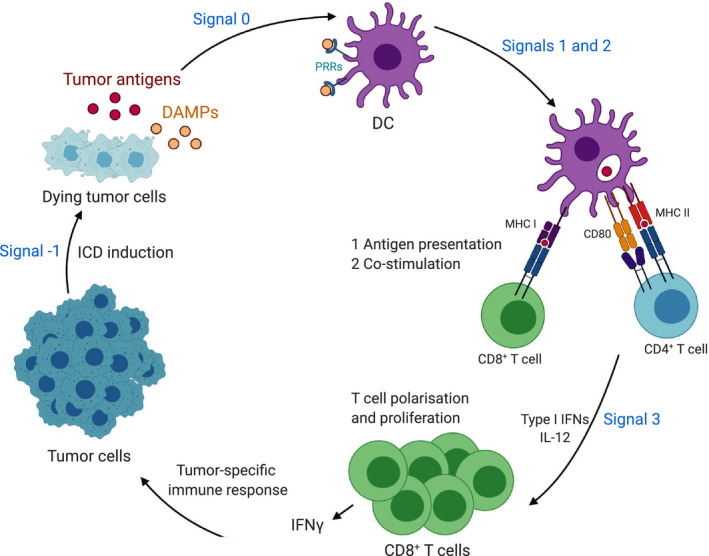Fig. 3.

Role of DAMPs in antigen cross‐priming and antitumor immune responses. Upon immunogenic cell death (ICD) induction, dying tumor cells release tumor antigen and damage‐associated molecular patterns (DAMPs). DAMPs stimulate pattern recognition receptors (PRRs) on dendritic cells (DCs) leading to T‐cell activation and the initiation of tumor‐specific antitumor immune responses following five signals (signals −1 to 3). Signal −1 is the cell death process itself that results in DAMPs and provides tumor antigens for antigen cross‐priming. DAMPs mediate the attraction and activation of DCs that engulf and process dying cells (signal 0). DCs provide 3 signals to activate T cells; signal 1 is the antigen recognition mediated through the T‐cell receptor (TCR), trigged by DCs cross‐presentation of tumor antigens on major histocompatibility complex (MHC) I or MHC II molecules to CD8+ T cells and CD4+ T cells, respectively. Signal 2 is the engagement of naive T cells with co‐stimulatory receptors on DCs such as CD80 which is required for efficient T‐cell activation. Signal 3 is the additional polarization and differentiation signals delivered from DCs, including interleukin 12 (IL‐12) or type I interferons (IFNs), that are crucial for T‐cell differentiation into tumor‐specific IFN‐γ‐producing T cells.
